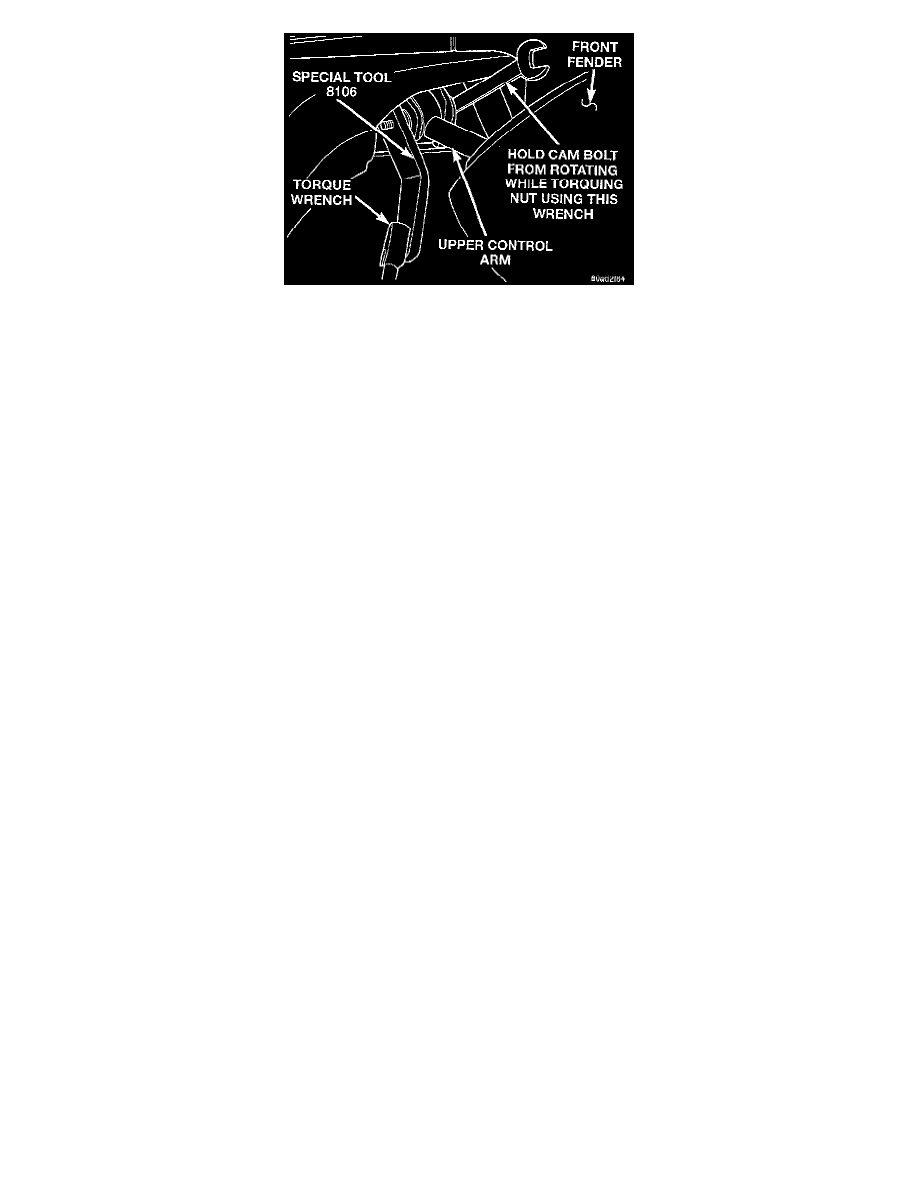Prowler V6-3.5L VIN G (1999)

AFTER CAMBER AND CASTER ADJUSTMENT
After the caster and camber has been set to the preferred specification, and the vehicle is at the correct curb height tighten the upper control arm
cam bolt nuts to a torque of 108 Nm (80 ft. lbs.). The upper control arm front and rear cam bolt nuts are tighten and torqued using Torque Wrench
Adapter, Special Tool 8106, or equivalent.
Preliminary Inspection
PRE-INSPECTION
Before starting a wheel alignment on this vehicle, the following inspection and necessary corrections must be completed.
1. Tires with the same recommended air pressure, size, and tread wear.
2. Inspect the tire/wheel assemblies for evidence of an unbalance condition. Both static and dynamic unbalance can affect vehicle steering.
3. Front and rear wheels for excessive radial and/or lateral runout and unbalance.
4. Inspect and replace (if necessary) the front and rear wheel, hub and bearing assemblies.
5. Ball studs and linkage pivot points, steering gear for looseness, roughness, binding or a sticking condition.
6. Suspension components for wear and noise. Check components for correct torque.
7. Inspect front and rear shock absorber assemblies for leaks or any sign of damage. Jounce front and rear of vehicle to determine it the shock
absorbers dampen vehicle motion properly.
8. Inspect front and rear coil springs on shock absorbers for any signs of damage.
